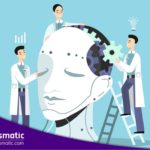Education has traditionally been a unidirectional process. Students learn what the teachers teach, thinking—or hoping—that everything they are learning will enable them to contribute to the workforce, and in the process, have satisfying careers. Educators, partly directed by regulatory bodies, have been teaching students skills that they think would make them productive workers and responsible citizens. This is not to say that the educational systems until today have remained totally inflexible and unaccommodating to changes in the labor market. Educational systems and institutions have been, without a doubt, evolving with the times. However, the rate at which institutions have been evolving to keep up with the times is a matter of grave concern.
The rate at which the job market is changing—driven by technological changes in industries and economies—outpaces the change in educational systems like an F1 race car outpaces a farm tractor. It is no surprise then, that most students are not career-ready when they graduate out of universities and colleges. To create truly career-ready students, institutions providing higher education should rethink their approach towards both how they teach and what they teach.
Career-ready students: keeping up with a dynamic job market
Training career-ready students essentially means making them employable. And as the job market becomes increasingly dynamic due to the evolving needs of the employers, students must become more than employable—they must become the perfect fit for a job. But how do students become the perfect fit for employers’ needs? They must have all the skills that the employers seek to fulfill their organizational requirements.
The students who check all the boxes on an employers’ skill requirements list are the ones who are truly market-ready or career-ready. Career-ready students have a set of skills that will not only help them get employment in the present job market, but will keep them relevant and in-demand even in the future. We emphasize the relevance of skills in the future because there may be some skills—just like there are certain technologies—that go from high-demand to obsolescence in a remarkably short period of time, sometimes shorter than the span of an individual’s career.
A loose example of this would be the falling demand and the consequent laying-off of coal miners in recent years due to the emergence and growth of clean energy alternatives. Many a coal miner have lost the opportunity to find new jobs since the only thing they know well isn’t needed anymore. Similarly, in the future, the sudden obsolescence of a specific programming language can make many unprepared programmers lose their jobs, jeopardizing their career prospects.
To maximize the probability of their students having a long successful career, educators must ensure that what the students are learning is both aligned with employers’ needs and more importantly, the students’ individual needs and interests. To achieve this, educators should drop the unidirectional approach where they are the sole party making decisions, and involve the students themselves in the process of making them career-ready.
Student-teacher partnerships: collaborating for career-readiness
To make the process—of educating and preparing students for long, successful careers—more effective, educators should act as partners for students in the process of career guidance. Conventionally, the process of creating and implementing curriculums has exclusively involved the educators, while the process of career exploration has almost exclusively involved the participation of students.
In a dynamic and challenging job market, where the bare minimum won’t be enough for both the employers and students, educators and students must come together to form a partnership that can improve both – the curriculum design and the career exploration process.
In recent years, the curriculum design process has become more inclusive through the incorporation of insights from both the job market and from student feedback. But career guidance teams have not been able to provide the kind of hands-on support to students that they’ve always wanted to. But now, new tools are emerging that can enable educators to partner with their students in their quest to become career-ready.
Real-time analytics: learning what students and employers need
Education analytics helps educators understand how students are faring on campus and what students’ future career aspirations look like. A good way to gain insight into students’ career goals is conducting a career interest survey that allows educators to know student ambitions.
This information, combined with advanced labor market analytics—which tells what employers are looking for—enables educators to bridge the gap between employers’ needs and students’ wants—allows educators to become better career guides for their students by getting more involved in a student’s career exploration journey.
Tools like Talismatic’s app for students can not only tell what roles a specific set of skills can get them but map out the entire career progression for them. This allows students, guided by their career services teams, to make the right career and educational choices, making them truly career-ready.

